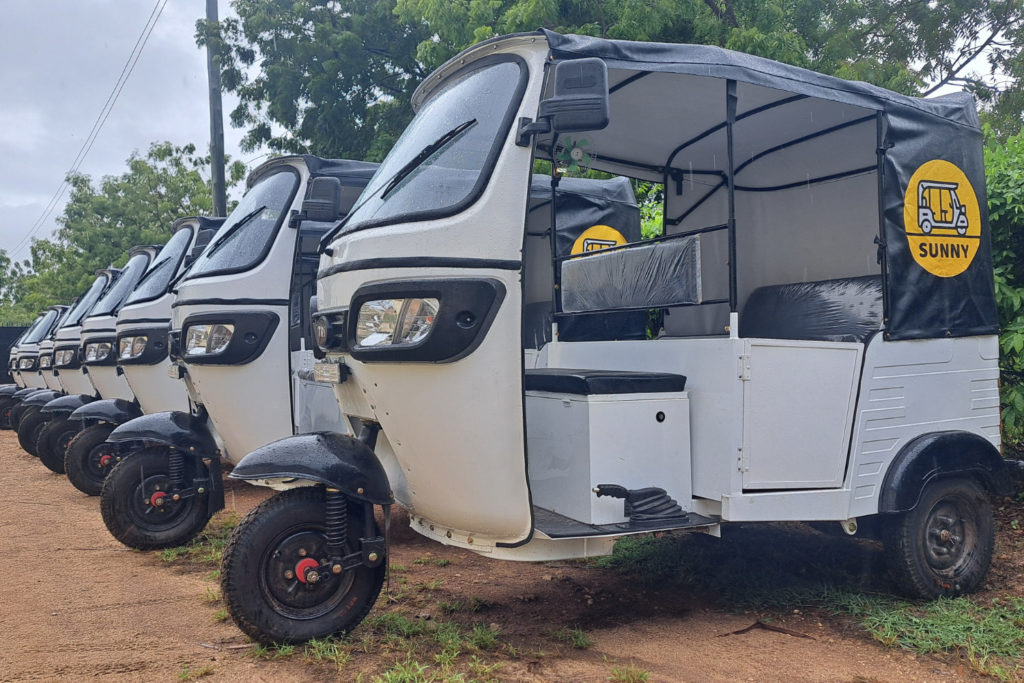Kenya has taken another major step in its transition to clean transport with the launch of electric Tuk-Tuks, a move that the National Transport and Safety Authority (NTSA) says could transform mobility, cut pollution, and create new economic opportunities.
The electric three-wheelers, especially the ambulance versions designed to reach underserved settlements, are being hailed as a game-changer for both urban and rural communities.
Key Highlights
- NTSA Push: The authority is urging motorists to adopt electric vehicles to reduce pollution.
- Electric Tuk-Tuk Ambulance: New models can access informal settlements and save lives.
- Economic Benefits: Lower operating costs and higher daily earnings for drivers.
- Renewable Integration: Vehicles can be charged using solar power, reducing reliance on fossil fuels.
- Momentum: Electric vehicle registrations in Kenya grew from just 65 in 2018 to over 4,000 in 2023.
Why Tuk-Tuks?
Tuk-Tuks, small, three-wheeled vehicles, are a backbone of urban transport in Kenya. They are affordable, flexible, and can access areas where larger vehicles cannot, making them indispensable in both towns and informal settlements. However, most Tuk-Tuks run on petrol or diesel, contributing to air pollution and high maintenance costs.
The electric models now being introduced address both issues. NTSA’s Head of Road Safety, Samuel Musumba, explained that electric Tuk-Tuks require far less maintenance since they do not rely on oil, frequent brake replacements, or constant servicing.
“They prioritize safety and integrate easily with solar power systems,” he said, adding that the ambulance versions will be able to reach areas where traditional vehicles cannot.
Economic Case for Electric Tuk-Tuks
For many drivers, the most compelling reason to switch is financial. Charging an electric Tuk-Tuk costs less than half of fueling a gasoline-powered one over the same distance. Early pilots along Kenya’s coast revealed that drivers could increase their daily net income by nearly 50%, from the equivalent of €7 to €11 per day, because of lower operating costs and reduced downtime.
This is particularly significant in a country where unemployment and underemployment remain pressing challenges. By lowering barriers to entry and improving income stability, electric Tuk-Tuks have the potential to create thousands of new opportunities for youth.
Clean Energy Synergy
One of Kenya’s greatest strengths in adopting e-mobility is its electricity mix. Over 90% of the country’s grid is powered by renewable sources, primarily geothermal, hydro, and wind. This means that electric Tuk-Tuks are not only cleaner than fossil-fuel vehicles but also significantly more sustainable than EVs in many other countries where grids remain coal-dependent.
The integration of solar power further boosts their utility. Operators in off-grid or semi-urban areas can charge their Tuk-Tuks using basic solar setups, ensuring continued service even where charging infrastructure is limited. This is especially critical for the electric ambulance models, which may be deployed in remote or underserved areas.
Kenya’s Growing E-Mobility Movement
The electric Tuk-Tuk rollout is part of a broader wave of e-mobility in Kenya. Between 2018 and 2023, the number of registered electric vehicles grew sixtyfold, from 65 to more than 4,000. The most rapid uptake has been in motorcycles, where registrations surged from 28 units in 2020 to over 2,500 in 2023. They now account for 3.3% of new motorcycle registrations.
Electric buses are also entering service, thanks to local companies such as BasiGo. Founded in Nairobi in 2021, BasiGo assembles electric buses locally and leases them to matatu operators through a “pay-as-you-drive” model. This reduces upfront costs for operators and ensures charging infrastructure is deployed alongside the vehicles.
Government incentives have supported this growth. Reduced excise duties, VAT exemptions, and commitments to develop e-mobility policies are making it easier for private players to invest in the sector.
Despite progress, Kenya’s e-mobility sector faces several hurdles:
- Charging Infrastructure: Public charging stations are still few and far between, concentrated mainly in Nairobi. Expanding this network will be key.
- High Import Costs: Import duties on EV components and batteries remain high, making upfront costs prohibitive for many operators.
- Public Awareness: Many motorists are still unfamiliar with EV technology, limiting adoption.
- Technical Skills Gap: Maintenance expertise for electric vehicles is still scarce, raising concerns about service reliability outside major cities.
Addressing these challenges will require targeted investment in infrastructure, stronger policy support, and skills training to prepare mechanics and operators for the transition.
Also read: Eskom vs Independent Power Producers Who Holds South Africa’s Energy Future?
Why Electric Tuk-Tuks Matter
Electric Tuk-Tuks represent more than just a new vehicle on Kenyan roads, they embody the potential for transport to be cleaner, cheaper, and more inclusive. In urban centers, they could significantly cut air pollution, improving public health. In informal settlements, ambulance versions could bridge critical gaps in emergency healthcare. And nationwide, they provide an affordable pathway for small-scale operators to participate in Kenya’s clean energy revolution.
This convergence of social, economic, and environmental benefits makes Tuk-Tuks uniquely positioned to lead Kenya’s e-mobility story. Unlike electric cars, which remain out of reach for many due to high costs, Tuk-Tuks are affordable and widely used, meaning the impact of electrification will be felt immediately and broadly.















